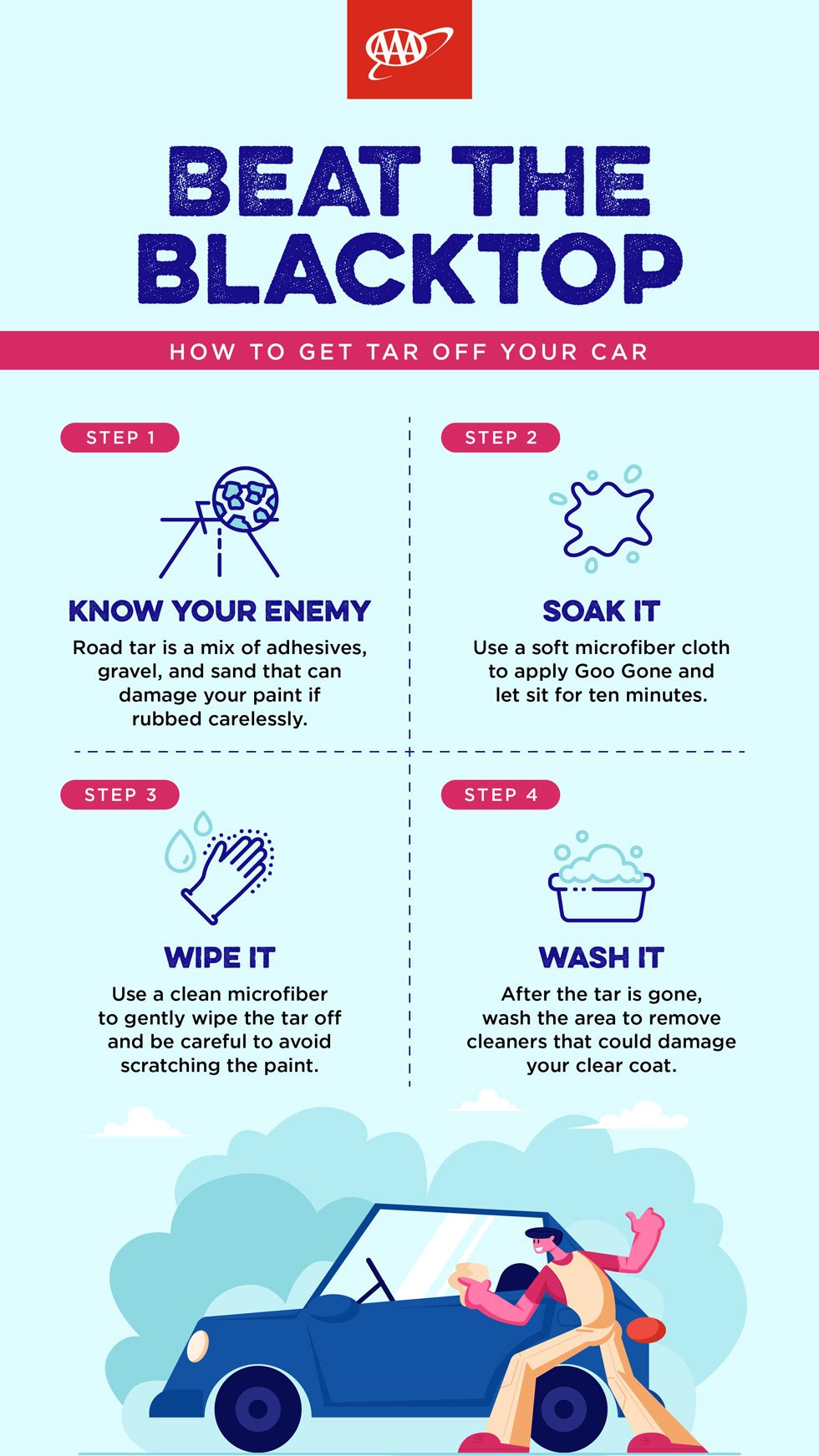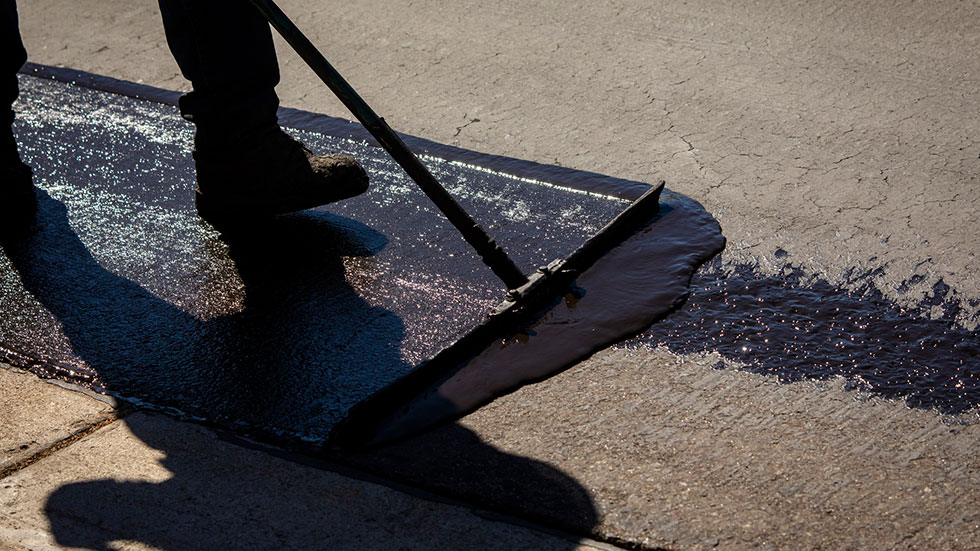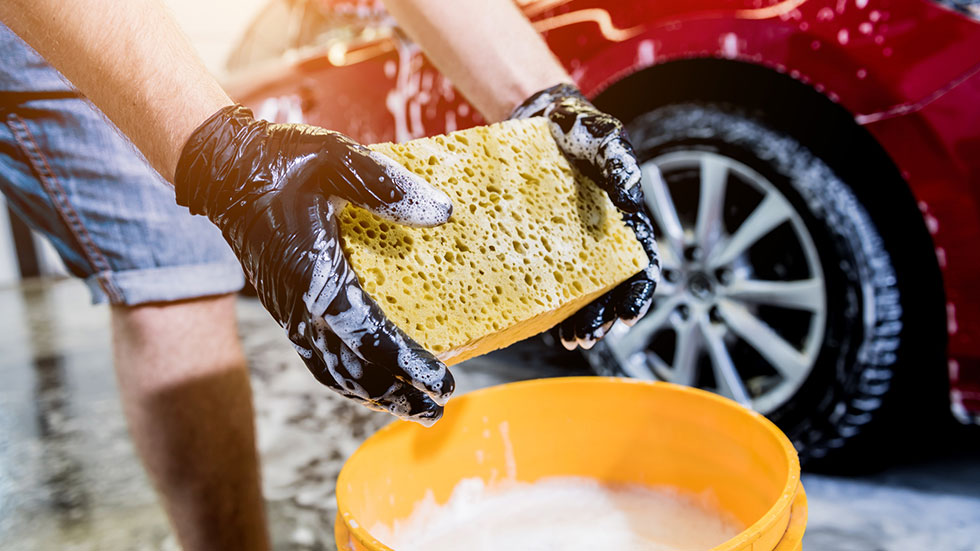3 Steps for Cleaning Tar Off Your Car's Exterior
Understanding the properties of tar can help you remove it— while avoiding damage to your vehicle's paint and clear coat


Freshly-paved asphalt may be a dream to drive on, in terms of how your vehicle handles and the smoothness of your ride. But, there's nothing worse than discovering tar stuck to the exterior of your vehicle, where it can wreak havoc. Not only does the stuff stick like glue (which is what it basically is), but tar can damage your clear coat or your paint if it's not removed promptly and properly.
Here's a look at some of the properties of tar and the reason it sticks to our vehicles—plus, three steps to clean the tar off your car.

How is tar made and used?
Tar, also referred to as asphalt, needs to be hard and tough enough to handle years of heavy vehicle traffic, plus the extreme highs and lows of ever-changing seasonal weather conditions. The roads we drive on, commonly known as "black top" to the people who pave them, are made by distilling crude petroleum and mixing it with sand, gravel, and asphalt cement (or "binder").
After these materials are heated and mixed together, they are used to pave the roads we drive on every day. The cooled black top hardens to form a durable, smooth, and uniform driving surface.
One of the most interesting things about asphalt is that it is 100% recyclable. In fact, experts believe its quality improves each time it’s recycled and new materials are mixed with old.
What makes tar so sticky?
In order to lay the black top, pavers must first heat the mixture to make it pliable before spreading it out and rolling it flat. Since asphalt is basically a mixture of granular rocks, the binding agents that keep them together to form durable roads must also be very sticky and durable.
If we drive over this surface before it's fully cooled or right after it's been laid down, wet tar can be kicked up and stick to our vehicles.

What's the best way to clean tar off my vehicle?
The binding agents in tar can be broken down using oil-based products. To the surprise of many drivers, things like peanut butter and WD-40 can be used to help break down and remove tar stuck to your vehicle without damaging your paint or clear coat. Other purpose-built products, like Goo Gone, can also be used to break down binding agents and remove tar.
Always keep in mind that any tar stuck to your vehicle is a mixture of adhesive agents and hard elements, like gravel and sand. After you’ve softened this abrasive mixture, you'll need to take care when wiping or rubbing to remove it. The coarser elements of the tar could scratch or damage the clear coat or the paint on your vehicle if rubbed carelessly or excessively.

Step 1: Soak the tar
Using a soft microfiber cloth or towel, apply peanut butter, WD-40, or Goo Gone liberally to the tar and allow it to sit for at least 10 minutes. As the product sits on the tar, it will begin to penetrate the binding molecules that hold it together and break them apart, making them easier to remove.
Step 2: Gently wipe the tar
After 10 minutes, wipe gently with a clean microfiber cloth to see if the tar has been loosened enough to remove. Try not to be discouraged if the tar still holds fast. The important thing is to be gentle enough to avoid scratching the paint or clear coat while also removing as much tar as possible. Apply your solution again, wait another 10 minutes, then try to gently wipe again.
Step 3: Wash your vehicle
After you’re satisfied that the tar has been completely removed, be sure to completely wash and dry the area. You want to be sure that none of the cleaners or chemicals remain on your car's exterior surfaces, as these can also break down the clear coat and paint.
If you're stuck with annoying tar on the outside of your vehicle, there’s no need to panic. By following a few simple steps and taking your time, most tar can be removed quickly and without damaging your vehicle.
